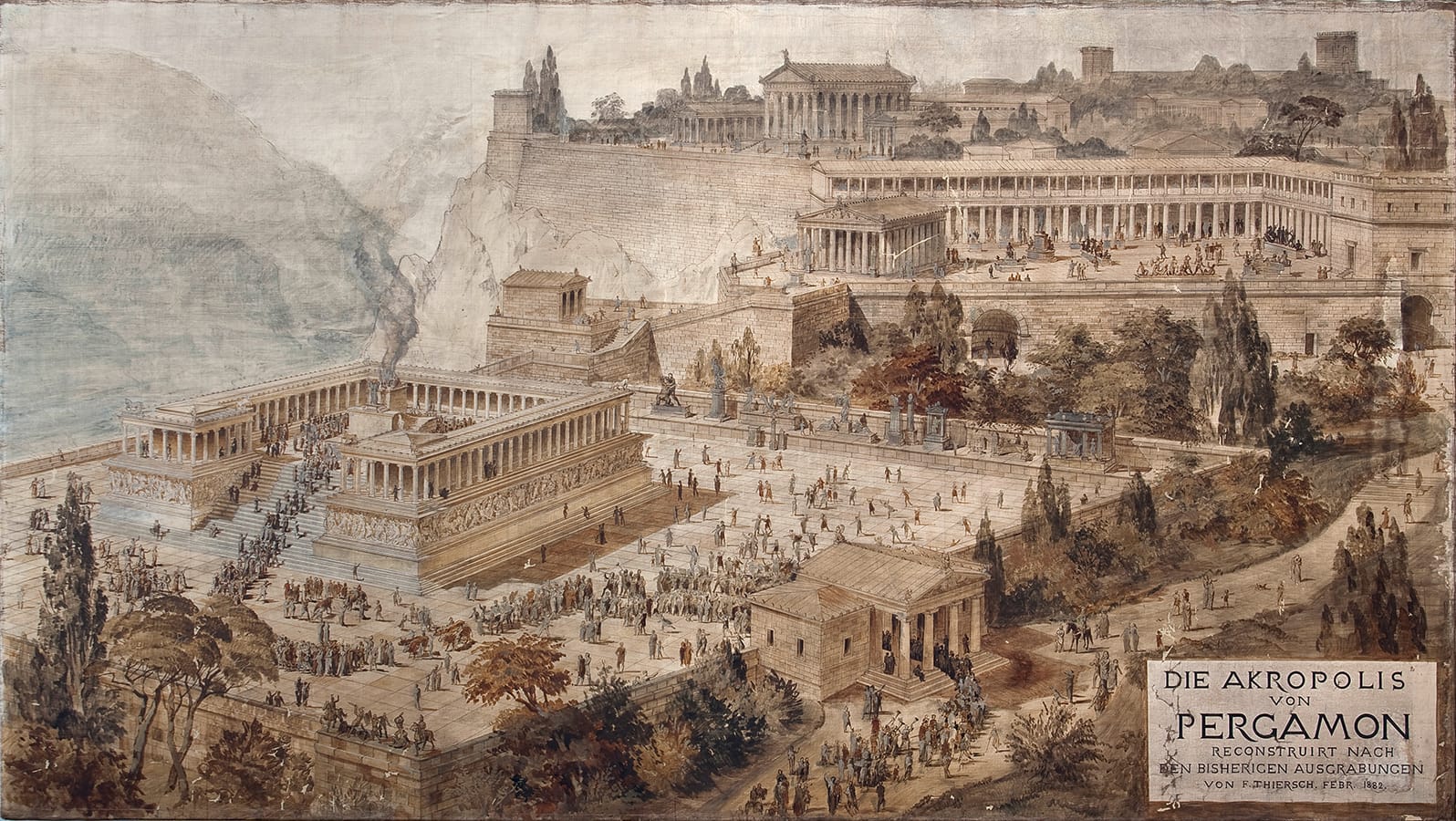Being Right Is Overrated
Righteousness is seductive, but it can get you fired, flogged, or erased. What can modern knowledge workers learn from a doomed Roman siege?
The ancient Romans had some fabulous names. One of the most majestic Roman names belonged to a man called Publius Licinius Crassus Dives Mucianus. For the sake of this story, let’s just call him Publius.
NOTE: you have to promise not to giggle every single time you read his name, and it’s ok to acknowledge out loud that it sounds like “Pubicus”, and that “Pubicus” reminds you of “Pubes”. Ok we can just call him Pubes.
Pubes was Pontifex Maximus, which was arguably the most important position to hold in the ancient Roman religion. To be Pontifex Maximus, especially during the period in which Pubes ruled, one had to be both a devoted spiritual leader, and an expert politician. Back then (and still), politics and war went hand in hand, so Pubes had a reasonable amount of exposure to armed conflict. Essentially, Pubes was an ancient Roman warrior priest.
Pubes met his end at a place called Pergamum, which was a coastal city in ancient Greece (now actually Bergama, Turkey). The battle for Pergamum was a comedy of errors. Pubes totally overestimated his strategy to conquer the city, and he personally was overtaken by the enemy and slain as he retreated from battle. Allegedly, he was so ashamed of the defeat, that when he was caught by enemy forces, he refused to divulge his true identity during interrogation. He managed to convince the soldiers who captured him that he was just a normal dude with no strategic value, so they stabbed him to death and took all his shit. Thus, Pubes didn’t have to suffer the humiliation of being captured alive.
To be fair, I think I’d prefer to get stabbed to death too, rather than to be paraded around town by my superior enemy, branded as the idiot who tried to conquer a fortress city, at the top of a steep hill, surrounded by sheer cliffs, at the bottom of which was a raging river.

Pubes was a respected consul, and nobody of any significance publicly questioned his authority as a leader in the ancient Roman religion. However, he very plainly lacked experience in military strategy. Could he use a gladius to hack a hoplite with ferocity? Sure. Could he use a pilum to skewer a skirmisher? More than likely. But the high-level strategy stuff, the “where do we go, when, why, and what do we bring?” type of questions, didn’t get sussed out properly. If Pubes had been a more experienced military leader, he wouldn’t have even considered the attempt to forcibly take Pergamum.
Here are a few key reasons why this was a bad idea from the start:
- The Pergamene rebellion against Rome was led by a very charismatic guy named Aristonicus. He was a local, and the local people loved him.
- Aside from having one of the coolest names ever invented, Aristonicus was a very experienced and well-seasoned military strategist.
- Because Aristonicus was local, he had a mastery of the terrain, the sentiment of his people, and that good old home-game advantage.
- As we learned a little bit earlier, Pergamum was in a rocky, hilly, steep location, and would have been really hard to sneak up on.
- The walls of Pergamum were constructed from blocks of Andesite, using a technique called Ashlar Masonry. Basically, the walls were made of giant, 2,000 lb stones hewn from the ancient heart of a volcano, and they were shaped so precisely by the stonemasons that they fit together tighter than legos. Good luck getting through that without literal dynamite, which hadn’t been invented yet.
- The volcanic wall of doom surrounding the city was punctuated by towers and battlements, which would have enabled the city defenders to rain all kinds of dangerous projectiles, unsanitary fluids, and spicy insults down on the invaders without much recourse.
Despite these obstacles, Pubes remained confident that his Roman legions could take the city of Pergamum. He felt the gods were on his side, and he had a super secret strategy that he felt would circumvent all of Aristonicus’s’s’s defenses.
When Pubes finally unveiled his war strategy to the council, he was met with silence and disbelief. Whatever morale existed amongst his military leaders instantly evaporated. As it turns out, Pubes’ genius plan amounted to “build a giant-ass battering ram and bust through the city gates”, which was literally the most predictable thing an invader could do.
Pubes assumed that Aristonicus would put most of his efforts into preparing for a less conventional invasion strategy, and that his vanity would prevent him from believing that the Romans would do something as obvious as walk through the front door. Pubes even sent spies ahead of the invasion to spread rumors that the Romans were planning to use raids and guerrilla warfare to siege the city into submission. Pubes thought of Aristonicus as a rebellious child, and underestimated the intelligence, preparedness, and unity of the Pergamese people from the start. None of these assumptions ended up panning out.

Transporting two Roman legions from Italy to Turkey by sea in 130BC was an astonishingly complicated, dangerous, and tedious task. Naval historians estimate that this would have required at least 60 ships, including troop carriers, warships, and supply vessels. This flotilla would have been mesmerizingly expensive to maintain, and the journey likely would have taken at least three weeks. Imagine how comfortable, sanitary, and restful the conditions would have been for the 18,000+ Roman soldiers aboard those ancient ships. I'd bet none of them had food-borne illness, acute dehydration, or found themselves physically exhausted or demoralized when they finally landed at Ephesus.
Ephesus boasted a large and well-developed harbor, and the established shipyards there were a perfect place to requisition a mast, which Pubes planned to fashion into battering ram. He sent orders to the naval architect at the port to provide his engineers with the biggest, baddest mast they could muster. He even went as far as to send specifications for minimum length and diameter.
I can only imagine the look on the naval architect’s face when the Roman courier presented him with this requisition order. The mast Pubes wanted was to be no less than 40 meters long (131 feet), with a base diameter of 1.5 meters (5 feet). It’s likely the mast would have been made of pine or fir, and would have been a single piece of timber from an ancient tree. A mast of this size would have weighed no less than 17,000 lbs (nearly 8 tons), and once it was fitted with an iron/bronze battering head, brackets, and fitments, it could have easily been as heavy as 26,000 lbs (about 13 tons).
Being a math guy, the skeptical naval architect decided to do some calculations. He knew that the army was exhausted from the voyage, and would now have to march uphill for almost 60 miles to get to the gates of Pergamum. Not only that, but the last few hundred meters of the journey to the gates had steepness grades of 10-20%. The architect was also smart enough to know Aristonicus’s’s scouts would immediately see the massive team of oxen and wheeled carts limping up the hill at a snail’s pace, and that there would be plenty of time to set up countermeasures.
The architect decided he’d calculate the minimum viable mast for the job. By his calculations, Pubes would only need a mast about 1/3rd the size of the one he ordered to break the gates of Pergamum. A four-ton ram would be much simpler to negotiate through the hills, and would be much easier to conceal from enemy scouts. The mast was requisitioned, and the architect placed his seal on the papers. What he didn’t know at the time was that he'd just signed his own death warrant.

Pubes anxiously awaited the arrival of his mast, boasting to his exhausted engineers that their victory would be fierce and absolute. When it finally arrived by cart, accompanied by the customary procession of laborers, overseers, shipyard representatives, and local officials, Pubes assumed that it was only the first segment of the delivery. After all, the mast he’d ordered was supposed to be three times the size of the one he received, so he assumed they’d built it in three robust segments, and were delivering all three separately.
When he learned that this was the only delivery, he fell silent. He quietly read the paperwork, noting the name of the architect who’d orchestrated the delivery. Without hesitation, he ordered a messenger to summon the architect to the engineering camp to explain himself.
A few days later, the architect arrived from the shipyard, bearing parchment scrolls filled with diagrams, calculations, and schematics. Pubes was obviously pissed, but the architect was certain that he would listen to reason, and that he would eventually agree to his logic. After all, Pubes was a Pontifex Maximus - a highly educated warrior priest of Rome! Pubes quietly listened to the architect explain why he thought a smaller mast would work just fine, and would actually be far more ideal from a logistical standpoint. After studying his schematics and drawings, he cordially thanked the architect and dismissed him.
Not two steps out of the encampment, guards seized the architect and brought him to the center of the engineering camp. There, in dirt, the mast he’d delivered was stuck in the ground like a telephone pole. The guards tied the architect to the mast and flogged him to death for insubordination in front of the entire company of engineers, overseers, laborers, and public officials. Pubes sat quietly and watched until the deed was done, then resumed his siege planning.
Pubes ended up getting the mast he originally ordered, and he mounted his siege on Pergamum according to his plans. On the way up the hill, his legions suffered constant ambushes, hit-and-runs, and setbacks from the terrain. Ironically, the guerrilla warfare he'd hinted at ended up being used by the enemy with great effectiveness against his own forces. By the time he got that stupid battering ram up the hill, his army had already been decimated in the fields outside the city, and was in full retreat. No Roman soldier stepped foot inside the walls of Pergamum. Aristonicus had a decisive victory, and the Roman army was routed.

Here’s why I made you sit through this overwritten essay: there is a unique danger to feeling “right”. Publius Licinius Crassus Dives Mucianus was fueled by righteousness, and he paid a horrible price for it. The nameless architect who defied his order was technically correct, but he paid the ultimate price for his righteousness. Being right about the wrong things is one of the quickest ways to get dead, or in a modern context, fired, ghosted, thrown under the bus, or quietly erased. Be careful about who you demonstrate your rightness to. The more righteous you feel about something, the more necessary it is to question it.
Righteousness without reflection is arrogance. Accuracy without tact is suicide. Remember the architect. He had diagrams. He had facts. He had grace. He also had exactly the wrong audience. The next time you find yourself burning with conviction, holding a truth no one asked for, say the following to your inner self:
Do I want to be right, or do I want to live to fight another day?